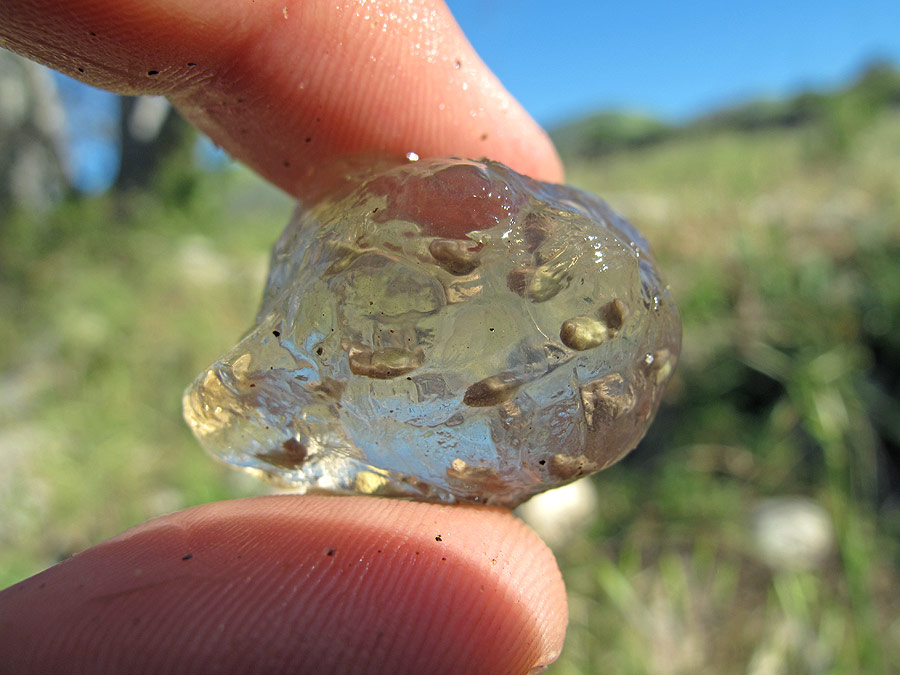On Sunday I went on the Earth Day Hike in Ringwood Ponds. It turned out that it was just me, GRF Sara Schlemm and Todd Bittner, our guide. Although it was a small group it was nice to have more flexibility in where we went and what we saw.
One ofter hears about how being “in nature” or without electronics is a de-stressing activity, but you never really realize it until you do it. It was both a physical and emotional breath of fresh air to be in a natural area and just plain explore. This is something we do often as children, but gets harder and harder to do the older you get, as we accrue new responsibilities.
I’ll just give one example. We were watching newts swim around in a pond, when Todd motioned us toward the surface and used a stick to pick something up. On a closer look, it was a collection of newts eggs. The eggs are bound together by a jelly-like substance and attached to blades of grass.
 It’s really quite beautiful up close. The sac does a wonderful job of protecting the eggs and keeping them stationary until they hatch.
It’s really quite beautiful up close. The sac does a wonderful job of protecting the eggs and keeping them stationary until they hatch.
The ponds at Ringwood are seasonal, in that they dry and refill seasonally. Because of this there aren’t any fish in these ponds, making them a ripe habitat for amphibians. When we arrived the ponds were mostly silent, but by the time we circled back around the sound of spring peeper’s was almost deafening. The variety of wildlife was pretty astonishing.
Something else that I really appreciated was tree identification. Before then I hadn’t a clue how to tell different species of trees apart. Todd showed us a bunch of different ways to tell common trees apart: from bark to leaf shape to branching patterns. The people in change of managing Cornell owned natural resources do a lot of management of species ratios and ecosystem health so its crucial that they can identity trees quickly.
